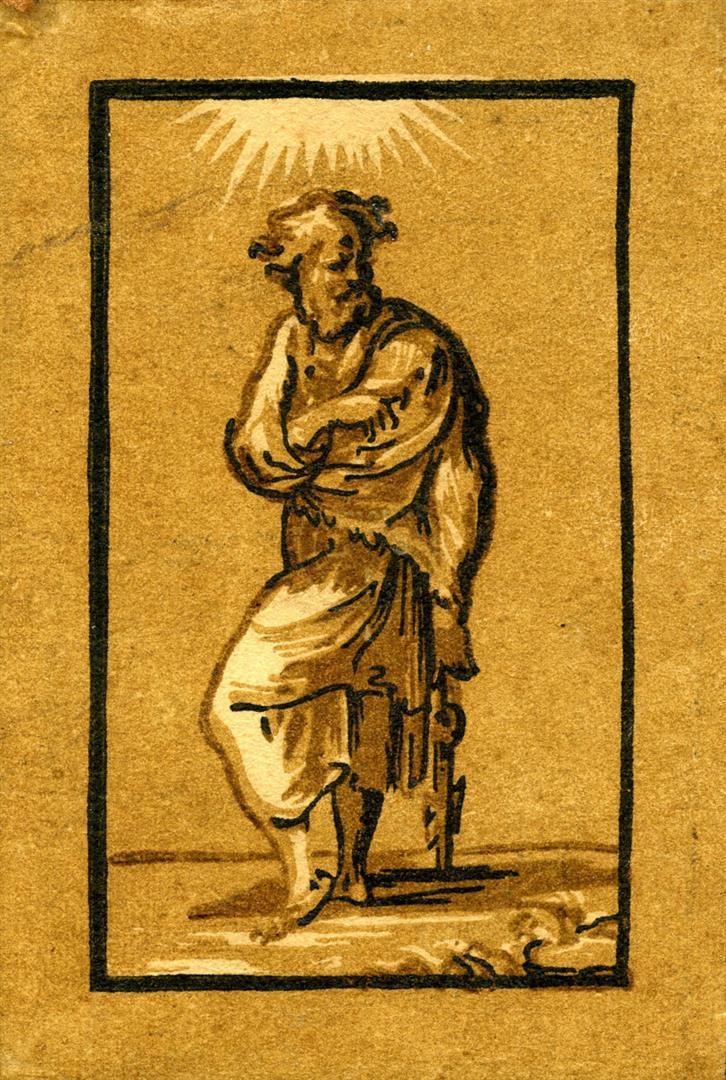OGGETTO
DATAZIONE
AUTORE
STATO DI CONSERVAZIONE
MODALITÀ DI CONSERVAZIONE
RESTAURI
ISCRIZIONI
STEMMI, MARCHI
NOTIZIE STORICO-CRITICHE
Chiaroscuro woodcut from 3 blocks, light brown, medium brown, black
Although Bartsch listed twelve prints in the chiaroscuro woodcut series of Apostles after Parmigianino, only ten are known (B.XII.69.1-70.12; Saint Bartholomew and Saint James the Less are untraced). In seven of these prints, an attribute clearly identifies the depicted saint. This is the case for Saint Simon, who is shown holding a saw, the instrument of his martyrdom. Parmigianino's drawing for Saint Simon is now lost, but we can infer a great deal about its appearance from six preparatory drawings for the Apostle series in the Louvre (Andrew, inv. 6487/1), John the Evangelist, inv. 6487/2, Matthew, inv. 6487/3, Paul, inv. 6487/4, Philip, inv. 6488/2, and Judas Thaddaeus, inv. 6488/3. See Popham 1971, vol. 1, pp. 156–57, nn. 468–71, 473–74; vol. 2, pl. 167–68. Parmigianino made a number of additional related studies, in some cases making more than one drawing of the same apostle, such as the Uffizi drawing for Saint Andrew. See Popham 1971, vol. 1, p. 71, n. 96; vol. 2, pl. 169).
Generally dated to Parmigianino's years in Bologna (Popham 1971, vol. 1, p. 16; Ekserdjian 2006; Serra in Parmigianino. Dessins du Louvre 2015. Gnann 2007, however, places the drawings earlier to Parmigianino's Roman period), these small, delicately executed pen and brown wash drawings feature the saints in a variety of attitudes, each rendered in isolation and draped in voluminous garments. The chiaroscuro woodcuts, which maintain the relative size and orientation of the drawings, were likely executed without Parmigianino's immediate participation. In fact, working at a remove from the artist, the chiaroscurist might have had limited access to all twelve drawings. This could explain why the series remained incomplete.
An anonymous etcher, who inscribed twenty-six plates after Parmigianino's designs with the initials FP, executed the complete series of twelve Apostles. In his etchings, the Master FP places each figure in an outdoor setting, substituting grassy terrain for the simple horizon lines of the drawings (B.XVI.20.2-22.13). The anonymous printmaker may in fact have taken inspiration, if not instruction, from Parmigianino himself, who included similar landscape details in his own related etchings, Saint James the Major and Saint Philip (B.XVI.11.8 and .9; Parmigianino may have made these etchings with plans to execute an entire series, and upon abandoning the project, turned it over to the Master FP. See Popham 1971, vol. 1, p. 16). In contrast, the chiaroscuro woodcuts transcribe the drawings without elaboration, representing each saint on a neutral ground.
Bartsch believed that Antonio da Trento was responsible for the chiaroscuro Apostles. Although Popham questioned this attribution and Ugo has been proposed as an alternative, Antonio's authorship of the series has generally been accepted (an attribution to Ugo was proposed in Mariette, Kolloff and Copertini). Both the cutting and three-block design distribution strategy used for the Apostles share some a nities with Antonio's Martyrdom of Two Saints (ALU.0957.1). However, when dealing with prints of small size that rely directly on carefully worked up modelli, it is extremely difficult to make an attribution based on cutting technique alone. In the case of the Apostles, the printing characteristics and publishing histories point to the workshop of Niccolò Vicentino.
ALU.0973.1, in light and medium olive green and umber brown inks, was issued in an edition early in Vicentino's workshop activity (this palette is the second in Stiber Morenus's chronology of multi-woodcut editions. Twelve other compositions recorded in these inks are discussed in Stiber Morenus 2015). In this sheet, and throughout the edition, pigments are coarsely ground and the uneven dispersal of the green particles in the binder is readily visible. Because a relatively high amount of binder was used in the inks, the edges of the printed forms appear soft. Moreover, this liquid ink, which was abundantly and unevenly applied, flowed into some of the cut out areas of the blocks and slightly obscured the design.
The Apostles series appears to have been printed in large numbers and in a great variety of ink palettes. Its evident success reflects the increased commercialization of the technique ushered in by the Vicentino workshop in the 1540s. The Apostles have been associated with Marcantonio Raimondi's so-called santini, a series of small engraved saints after Raphael's designs that Vasari described as models for young artists (Gnann 2013, Vasari-Bettarini and Barocchi). Doubtless, the chiaroscuro Apostles would have been appreciated and collected because they conveyed Parmigianino's graceful designs; as works of modest scale and devotional nature, the series must have contributed to diversifying and broadening the audience for the chiaroscuro woodcut as well.
Naoko Takahatake, The Chiaroscuro Woodcut in Renaissance Italy, exhibition catalogue, Los Angeles County Museum of Art, June-September 2018, National Gallery of Art, Washington D.C, October 2018-January 2019, DelMonico Books/Prestel, Munich-London-New York, 2018,pp. 146-147.
Impressions issued by the Vicentino Workshop:
-BM 1895,0122.1280: verdigris greens/black https://www.britishmuseum.org/collection/object/P_1945-0512-1
-Berlin 988-19: mustard/brown/black
-Berlin 454-22: verdigris
-BnF Réserve EA39: red
-BnF BD 5 Mazzuoli: orange
-Frankfurt 33887: red
-Marucelliana XXV, 154:red
-MFA 64.1049: light brown/blue/black https://collections.mfa.org/objects/168270/st-peter?ctx=bc7f214a-ba5f-4897-bc2e-8f5a7e7ff20e&idx=0
-Albertina DG2002/441: greens https://sammlungenonline.albertina.at/m?queryid=84631cfa-fd0a-4d00-87ca-16deeb6c4a62
-Albertina DG2002/442: purple https://sammlungenonline.albertina.at/m?queryid=b2f29536-84ed-4670-9335-aae0bdaf1b2e
Impressions issued by the the Ladder in a Shield Printer in light brown/brown/black:
-BM 1918,0713.1 (possibly)
Impressions issued by the the Printer of Greek Text in orange/brown/black:
-Saint Peter (Rijksmuseum RP-P-OB-31.219) http://hdl.handle.net/10934/RM0001.COLLECT.52102
Impressions to be determined:
- Kirk Edward Long Collection
DOCUMENTAZIONE FOTOGRAFICA
REPERTORI
BIBLIOGRAFIA
https://www.thelacmastore.org/products/the-chiaroscuro-woodcut-in-renaissance-italy?_pos=1&_sid=ce2a0cc2a&_ss=r
MOSTRE/ESPOSIZIONI
AUTORE DELLA SCHEDA
AGGIORNAMENTO
Altre relazioni
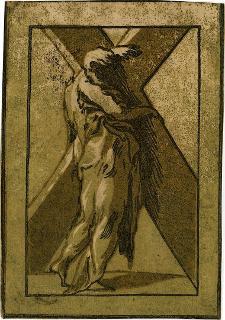
- ALU.0965.1 - Apostoli: Sant'Andrea Atlante delle Xilografie italiane del Rinascimento

- ALU.0968.1 - Apostoli: San Filippo Atlante delle Xilografie italiane del Rinascimento
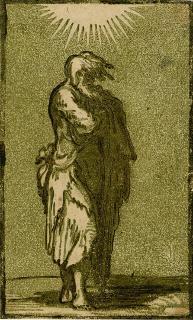
- ALU.0971.1 - Apostoli: San Tommaso Atlante delle Xilografie italiane del Rinascimento

- ALU.0967.1 - Apostoli: San Giovanni Evangelista Atlante delle Xilografie italiane del Rinascimento
- ALU.0972.1 - Apostoli: San Giacomo Minore Atlante delle Xilografie italiane del Rinascimento
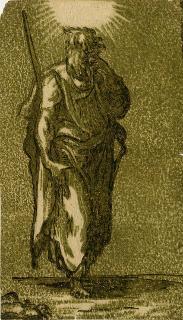
- ALU.0975.1 - Apostoli: San Paolo Atlante delle Xilografie italiane del Rinascimento

- ALU.0974.1 - Apostoli: San Giuda Atlante delle Xilografie italiane del Rinascimento

- ALU.0970.1 - Apostoli: San Matteo Atlante delle Xilografie italiane del Rinascimento
- ALU.0969.1 - Apostoli: San Bartolomeo Atlante delle Xilografie italiane del Rinascimento
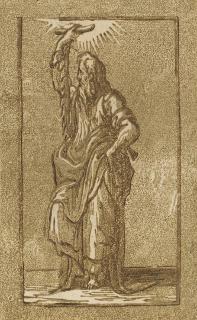
- ALU.0973.1 - Apostoli: San Simone Atlante delle Xilografie italiane del Rinascimento
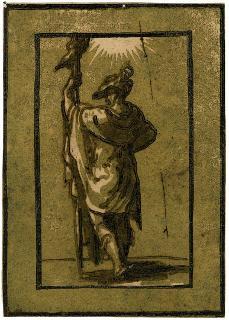
- ALU.0966.1 - Apostoli: San Giacomo Maggiore Atlante delle Xilografie italiane del Rinascimento

